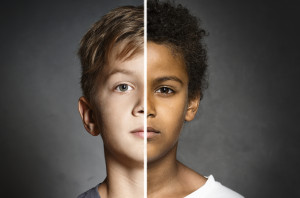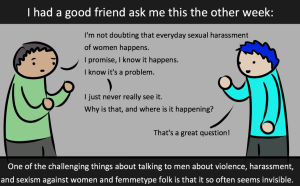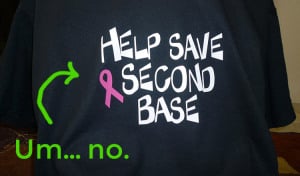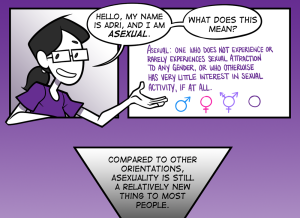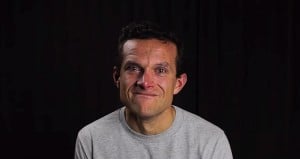Originally published on Love Transmutes and republished here with the author’s permission.

Source: iStock
Accountability and accountability processes have become a hot topic amongst movement builders and organizers for several years now.
There have been several accountability models that have been implemented. These models include both one on one mediated responses and group accountability processes.
However, many of these processes and conversations have failed at keeping communities, organizations and other groups together.
This is due, in part, to the fact that many people lack the skills to facilitate and implement an accountability processes.
The other part is that people are not on the same page as to what accountability actually means.
According to the Merriam Webster dictionary, holding someone accountable is to require someone to explain actions or decisions. In the workplace, schools or other structured groups, holding someone accountable for their actions or decisions can be an easier task due to their being very clear rules, agreements, etc.
However, in non-structured movements, friend groups, or even school groups, accountability processes don’t work as smoothly because the level of commitment, engagement, and understanding of behaviors are different.
Here I offer five ways to help you practice a loving form of accountability in more unstructured settings.
1. Approach The Situation With An Inquisitive Mind
I used to be a program coordinator in an LGBTQIA+ youth center (ages 13-23). In order to be a regular participant, youth had to go through a “New Youth Orientation.” This orientation covered the center agreements and the accountability processes just in case they were to ever break any of those agreements.
At the end of the orientation, each youth signed a form indicating their commitment to the center’s agreements and processes. We would then refer to the orientation packet to reinforce behavior or implement the accountability process to which they agreed.
Often times this process failed, even though we had clear agreements, center norms, and accountability measures.
In fact, many of the youth kept saying that they felt we were nagging them, policing their behavior, and that they felt they couldn’t be their authentic selves.
Eventually we had a staff meeting about changing our approach. Our on-site therapist suggested that we ask the youth why they were saying or doing the things they were in the space, as oppose to telling them to stop immediately.
At first this suggestion seemed like it would leave space for youth to say and do harmful behaviors and then justify themselves. However, once we implemented it, we saw that it opened conversations with the youth as a community as opposed to soliciting an angry or dismissive response.
For example, we often heard the youth say “b*tch” or “f*g” in the space despite numerous redirections by staff.
Instead of reprimanding the youth staff members would ask them, in a very calm, inquisitive tone, “Hey, can I ask you a question? Why do you all call one another b*tch?”
Immediately, the youth who were involved in exchange with one another came and engaged in a conversation with the staff person.
Simply asking the question opened up a dialogue about how the youth felt it was a part of gay male culture to use certain language and they didn’t find it offensive, and they want to reclaim the word.
The staff were able to validate the youth’s need to express their community’s culture, while explaining how using such terms could be offensive to other members of the LGBTQIA+ community who were using the space.
This led to further dialogue about the history behind such words and how misogyny and other systems of oppression were used to harm female-identified/presenting folks. Eventually the conversation led to a further understanding of how the use of those words were pushing female-identified/presenting folk away from the space.
Eventually, many youth and staff came together in community and agreed that it was necessary to be more mindful of using inclusive language and helping people feel more supported.
2. Have A Conversation When The First “Incident” Happens
Too often, we wait until we have a list of offenses against an individual before addressing their behavior. At that point, conversations turn from holding someone accountable to shaming, policing, and potentially ambushing someone.
Addressing behaviors when they first occur as oppose to waiting is important for two main reasons:
It avoids creating a situation where the person feels attacked.
Prior to changing our approach with the youth, the youth often would say that we were kicking them out or disciplining them over something they didn’t know they were doing wrong. They would also ask us why we didn’t say something or give them a clear warning, prior to handing them a list of times they broke the agreements of the space.
Accountability is something that is supposed to be used to help us all be true to who we are.
This includes being mindful of what we as a community agreed and consented to and of the message(s) we want to share with our family, community and others. Accountability is not a weapon to be used to tell people they are problematic and then reinforcing that with a long list of what they did wrong.
Using an inquisitive approach to discussing a behavior when it first happens (or you first become aware of it) shows that you care about the growth of that person, that you are not judging them or making assumptions about their behavior, and that you are investing in everyone’s safety and well-being. This also includes the person who you feel is acting in a problematic manner.
Now, if you are angry, feeling triggered, or unable to fully articulate yourself, you do want to give yourself some space to be responsive and not reactionary. Giving yourself 1-2 days to do this is often sufficient enough, however when you wait 3 or more days, it usually turns into avoidance.
It keeps YOU from engaging in harmful behavior, too.
Like with any other community, the center’s youth would often be in conflict with one another. When conflict would come up, the youth would often come and tell staff about the situation.
For example, a transgender youth who was in the beginning of their transition process reported to staff that they felt other youth weren’t respecting their pronouns and were making transphobic comments.
One of the friends of the transgender youth reported to staff that the trans youth all of a sudden stopped speaking to them, would ignore them when they tried to speak to them, and was behaving in passive-aggressive ways. But they weren’t sure why.
When both of these youth came and spoke to staff, we asked if they spoke to the other youth directly, and they both said no.
When the youth finally spoke to one another, it turned out that the transgender youth’s friend didn’t realize that their comments were transphobic or harmful, because they both joked and engaged in the same manner prior to the youth’s transitioning process and there was never a conversation about changes around that.
The youth apologized and said they would work on stopping the comments and respect their pronouns. The transgender youth also apologized, because their passive-aggressive behavior was hurtful and not acceptable as well.
There are times where we are upset or feeling offended by people’s behaviors, and instead of us addressing it right away, we begin to engage in harmful avoidance behaviors.
When we stop speaking to people, are passive-aggressive or suddenly change the dynamics of a relationship without directly communicating with the other person, we too begin to inflict pain and harm to the person we feel needs to be held accountable.
3. Clearly Explain The Impact Of That Individual’s Behavior On You, And Only You
This ties into number 2. When we address issues right away, we are able to clearly speak to the behavior and the impact that behavior is having on us as the individual.
When you’re holding someone accountable, it is important to speak to how you and only you are feeling and being impacted.
Accountability processes that include vague or general examples of behaviors often lead to confusion, confrontations, and a way to easily dismiss what it is that is trying to be addressed.
Also, not speaking from an individual stance, but trying to speak for a group, again is opening the door for blame, feelings of ambush, etc.
4. Practice Raw Listening
The concept of “Raw Openess” can be found in the work of Ana Louise Keating. Raw listening is a part of this.
Sometimes when we are holding/being held accountable, we have to be willing to listen with all of ourselves and truly hear what is being said.
In the previous example it was initially hard for the transgender youth to accept the fact that their behavior was harmful and disrespectful as well.
They went into the situation wanting to hold the person accountable for their behavior that was harmful, and initially refused to hear how they harmed others through their avoidance behavior.
The cisgender friend was apologetic and acknowledged what they had done something hurtful and disrespectful. They also pointed out that being hurt doesn’t justify hurting someone else.
In accountability processes, we have to understand that sometimes both people involved need to be held accountable and their behavior needs to be named.
It was difficult for the transgender youth to initially say yes they were wrong and acknowledge they did harm. But when they did, they both were able to move on.
5. Model What Loving Accountability Looks Like
When working with youth, staff had to continuously model what accountability looked like.
When youth would hear staff slip and use inappropriate language in the space, they would call staff out and we would say thank you and that they were right.
In both group and one-one-one conversation between youth and staff, we made sure to reflect and acknowledge what the youth were saying.
We needed to remember that accountability isn’t about convincing someone to think or act like you, or even admit that they did something wrong. It also is not a process to demand that someone explains or justifies their behavior, when people feel as though they’ve been wronged.
Rather, it is about helping people make decisions that lead them to being their best self.
Imagine what accountability practices would look like if we came from a perspective of love and support for one another. What if we asked questions about behavior, and explained how that particular comment or action takes away from the message and love that the person is trying to share?
When we move away from trying to prove someone wrong to nurturing growth we will begin to see how loving accountability can transmute the way we relate in our communities.
[do_widget id=’text-101′]
Zami Tinashe Hyemingway is a Transmasculine poet, teacher, healer, and lover. He received his MSW at Arizona State University, has a spoken word album called Self Made Man/A Lovers Journey, and currently resides in Berkeley, California with his sweetheart and dog. You can follow Zami on Facebook and read his blogs on Lovetransmutes.com.
Search our 3000+ articles!
Read our articles about:
Our online racial justice training
Used by hundreds of universities, non-profits, and businesses.
Click to learn more
Most Read Articles
- « Previous
- 1
- …
- 30
- 31
- 32








